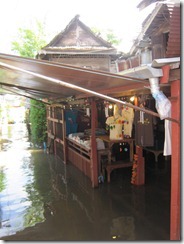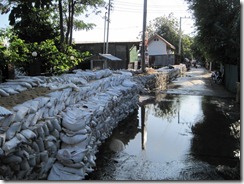Morning, January 1, 2011
I reached the top of Gilman’s Point 5,685 meters up at around 8 a.m. in the morning. Weak and exhausted, I held the group back for at least 20 minutes while I gathered my breath, bearings, and body. Kay, Tom, and the guides waited patiently on the precipice for me to recover. A steady stream of climbers passed by, weaving between boulders and benches littering the top of Gilman’s. Everyone in our group was primed to reach the summit; my body was holding them back. I was embarrassed for my frailty and at the same time thankful I had made it this far. At long last I willed myself on and left Gilman’s Point like a steam engine taken out of service. Our leader August hovered nearby and assigned one of his guides, Manda, to accompany me all the way to the top. Manda had tried to help Kay but handled her quite roughly; he didn’t seem to understand the concept of “handle with care.” I was willing to overlook his unpolished behavior as long as he helped me to the summit.
I insisted on hiking unassisted to the top of Kilimanjaro. I propelled myself forward using my hiking poles like crutches. After Gilman’s steep face, the climb along the volcano rim was far more gentle but still excruciatingly difficult for me. The path wound along the ridge to Stella Point at 5,756 meters and then on up to Kilimanjaro’s highest point, Uhuru Peak, topping out at 5,895 meters (19,341 feet). Most of the snow that should have blanketed the mountain top had already melted save small patches of snow and ice clinging to the rim. The weather was abundantly pleasant as the sun cast an ethereal glow across the landscape. I was tempted to take off some winter clothing and unzip my heavy jacket but left them on out of concern that the sun’s intense rays would incinerate my skin.
Along the way to Stella Point I found a bit of a rhythm and hiked at a quicker pace that seemed slightly faster than molasses. I urged Kay and Tom to go on ahead, and they were soon out of sight. Other climbers passed me as if I were standing still. But I didn’t mind! I was lucky to be here at all and grateful that I wasn’t a victim being carried off the mountain.
I reached Stella Point after about an hour and walked into an incredible view of two large glaciers gracing the northern and southern flanks of Kilimanjaro. Their towering walls of blue ice jutted into the sky like high rises in Manhattan! So beautiful and serene, they were an awe to see rising in thick sheets above the mountain slope. Nevertheless, they looked as if they had seen better days, remnants of a bygone era when the age of ice roamed the Earth. The glaciers were dwarfed by the mountain’s sheer mass dominating the landscape as far as the eye could see. Covered in volcanic gravel, its slopes were traversed by tiny but fearless climbers who skied downhill in their hiking boots and carved makeshift routes to trails and camp sites far below.
I tried to take a photo from Stella Point with my digital camera when my clumsy hands dropped it in the dirt. Much to my dismay the camera malfunctioned and was rendered unusable. I was thankful to have had the foresight to pack an older, less powerful digital camera that I used for the rest of the trip. My error was a costly mistake; I discovered later that it would have cost as much or more to repair the camera than it did to buy a new one. Fortunately a family member repaired if for free by removing dirt from the lens – an easy enough fix.
My last bit of strength dissipated after I left Stella Point. I struggled mightily for one-and-a-half hours to the top of Uhuru Peak. The distances between stopping points grew closer and closer until I found myself starting and stopping at every oversized rock. Every rock became a minor victory. And yet I was discouraged because I never seemed to get any closer to the summit. Each time I thought I was approaching the top I was let down by the realization that Uhuru Peak was still further away. Even worse, climbers who had made it to the summit before me started to pass by heading in the opposite direction. It was a clear signal that I needed to summit soon before darkness forced me to turn around.
At long last I stood at the bottom of one final uphill slope about 50 meters from the top. It was the hardest sprint of my life. One meter, two meters, three meters, four; I ticked the steps off one by one as pain and fatigue gripped my legs and upper body. Suddenly the top of Uhuru Peak opened up before me like the gates of Olympus and Asgard. There it was! The incredibly enticing view beckoned to me. I drew on one last energy reserve and moved like never before, hobbling gingerly toward the famous crooked wood sign with yellow lettering marking the top of Uhuru Peak. Kay and Tom waited for me like angels with smiles and hugs.
I did it! I made it! Five days, four sleepless nights and an all-night hike later, I had reached the top of Africa. I was so overwhelmed with emotion that I wanted to cry but was too tired to let the tears of joy flow.




